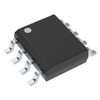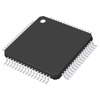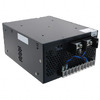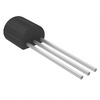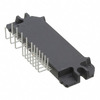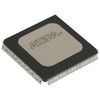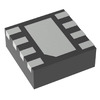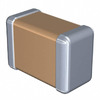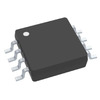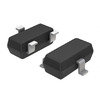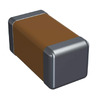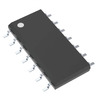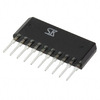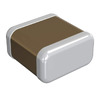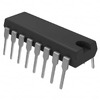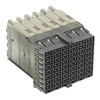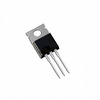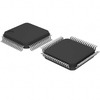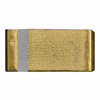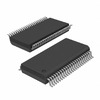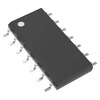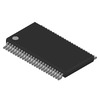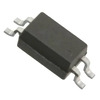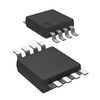Jak ATTiTY84 mikrokontroléry síly zabudované systémy?
Mikrokontrolér Attitiny84 je všestranné a kompaktní řešení, které se široce používá v zabudovaných systémech a malých elektronických projektech.Tento článek zahrnuje vše od jeho funkcí a aplikací po alternativní možnosti a technické specifikace, což vám pomůže rozhodnout se, zda je to správná volba pro vaše potřeby.Katalog

Přehled ATTITY84
The Attitiny84 je kompaktní mikrokontrolér s nízkým výkonem, který je navržen tak, aby poskytoval spolehlivý výkon v řadě aplikací.Používá 8bitovou architekturu, která je efektivní a schopná manipulovat s mnoha úkoly pro vložené systémy, zejména tam, kde je záleží na energetické účinnosti.Se 14 nezávislými kolíky, z nichž 12 lze nakonfigurovat jako I/O PINS, nabízí flexibilitu v malých projektech.Díky jednoduché architektuře a nízké spotřebě energie je vhodná pro projekty pro začátečníky i pokročilé, zejména ty, kde jsou ohledem na omezení prostoru nebo energie.
Konfigurace PIN ATTINTY84

| Číslo kolíku | Název pin | Popis |
| 1 | VCC | Pozitivní pin MCU (+5V) |
| 2 | (PCITT8/XTAL1/CLKI) PB0 | PIN Portu B Bit Bit 0 nebo oscilátor PIN nebo PIN Změnit Přerušení zdroje 8 nebo vstup hodin z externího zdroje |
| 3 | (PCITT9/XTAL2) PB1 | PIN portu B Bit 1 nebo oscilátor PIN nebo PIN Změnit Přerušení Zdroj 9 |
| 4 | (PCITT11/RESET/DW) PB3 | PIN Portu B Bit 3 nebo Reset Pin používaný hlavně pro programování nebo ladění vodiče Povolit nebo změna přerušení PIN Zdroj 11 |
| 5 | (PCITT10/INT0/OC0A/CKOUT) PB2 | Obousměrné I/O pin port b bit 2 nebo externí přerušení 0 nebo systémové hodiny nebo změna přerušení zdroje nebo porovnání časovače/čítače0 |
| 6 | (PCITT7/ICP/OC0B/ADC7) PA7 | Obousměrná I/O pin port a bit 7 nebo ADC vstupní kanál 7 nebo časovač/Counter1 Capture nebo časovač/Counter1 Porovnejte shodu B ven nebo pin Change přerušení 0, zdroj 7 |
| 7 | (PCInt6/OC1A/SDA/MOSI/DI/ADC6) PA6 | Obousměrné I/O pin portu Bit 6 nebo ADC vstupní kanál 6 nebo USI vstup dat nebo SPI MOSI použitý pro programování ICSP nebo časovač/Counter1 Porovnejte shodu a přerušení změny pin 0, zdroj 6 |
| 8 | PA5 (ADC5/DO/MISO/OC1B/PCInt5) | Obousměrná I/O pin portu A Bats 5 nebo ADC vstupní kanál 5 nebo USI data out nebo SPI miso použité pro programování ICSP nebo časovač/Counter1 Porovnejte shodu B out nebo přerušení kolíku 0, zdroj 5 |
| 9 | PA4 (ADC4/USCK/SCL/T1/PCInt4) | Obousměrné I/O pin portu Bit 4 nebo ADC vstupní kanál 4 nebo USI hodiny (tři dráty) používané pro programování ICSP nebo I2C SCL nebo časovač/Counter1 Counte1 HOCK Zdroj nebo PIN CHANCE REVRURT 0, Zdroj 4, zdroj 4, zdroj 4 |
| 10 | PA3 (ADC3/T0/PCInt3) | Obousměrná I/O PIN Portu Bit 3 nebo ADC vstupní kanál 3 nebo časovač/Counter0 Hodin Zdroj nebo PIN CHANCE Přerušení 0, Zdroj 3 |
| 11 | PA2 (ADC2/AIN1/PCInt2) | Obousměrná I/O pin port a bit 2 nebo ADC vstupní kanál 2 nebo analogový komparátor vstup - nebo změna pin přerušení 0, zdroj 2 |
| 12 | PA1 (ADC1/AIN0/PCInt1) | Obousměrné I/O PIN portu A Bit 1 nebo ADC vstupní kanál 1 nebo analogový komparátor vstup + nebo PIN CHANCE Přerušení 0, Zdroj 1 |
| 13 | PA0 (ADC0/AREF/PCInt0) | Obousměrná I/O pin portu a vstupního kanálu 0 nebo ADC 0 nebo externí analogové referenční napětí nebo změna přerušení kolíku 0, zdroj 0 |
| 14 | GND | Zemní kolík MCU |
Attiny84 CAD model
Symbol Attitiny84

ATTINY84 FOOLPRINT

Attitiny84 3D model

Technické specifikace Attitiny84
Technické specifikace, vlastnosti, vlastnosti a komponenty se srovnatelnými specifikacemi technologie mikročipů ATTITY84.
| Typ | Parametr |
| Časová doba z továrny | 2 týdny |
| Kontaktní pokovování | Cín |
| Mount | Skrz díru |
| Typ montáže | Skrz díru |
| Balíček / pouzdro | 14-dip (0,300, 7,62 mm) |
| Počet kolíků | 14 |
| Převaděče dat | A/D 8x10B |
| Počet I/OS | 12 |
| Časovače hlídacího psa | Ano |
| Provozní teplota | -40 ° C ~ 85 ° C ta |
| Obal | Trubice |
| Série | AVR® ATTITY |
| Publikováno | 1997 |
| JESD-609 kód | E3 |
| Kód PBFree | Ano |
| Stav dílu | Aktivní |
| Úroveň citlivosti na vlhkost | 1 (neomezený) |
| Počet zakončení | 14 |
| Ukončení | Skrz díru |
| Poloha terminálu | DVOJÍ |
| Napětí | 5V |
| Frekvence | 20MHz |
| Číslo základní dílu | Attitiny84 |
| Přívodní napětí max (VSup) | 5,5 V |
| Napájecí zdroje | 3/5V |
| Přívodní napěťový min (VSup) | 4,5V |
| Rozhraní | SPI |
| Velikost paměti | 8kb |
| Typ oscilátoru | Vnitřní |
| Velikost RAM | 512 x 8 |
| Napětí - napájení (VCC/VDD) | 2,7V ~ 5,5 V. |
| UPS/UCS/periferní ICS typ | MicroController, RISC |
| Základní procesor | AVR |
| Periferie | Brown-Out Detect/Reset, Por, PWM, Temp Sensor, WDT |
| Typ programové paměti | BLIKAT |
| Velikost jádra | 8-bit |
| Velikost paměti programu | 8kb 4k x 16 |
| Připojení | USI |
| Bitová velikost | 8 |
| Čas přístupu | 20 μs |
| Má ADC | Ano |
| DMA kanály | Žádný |
| Šířka datové sběrnice | 8b |
| Hustota | 64 KB |
| Velikost EEPROM | 512 x 8 |
| Počet kanálů ADC | 8 |
| Počet kanálů PWM | 2 |
| Počet kanálů I2C | 1 |
| Výška | 5,334 mm |
| Délka | 19,69 mm |
| Šířka | 7,12 mm |
| Dosáhnout SVHC | Ne SVHC |
| Kalení záření | Žádný |
| Stav ROHS | Rohs3 vyhovující |
| Olovo zdarma | Olovo zdarma |
Funkční schéma Attitiny84

Klíčové vlastnosti ATTINY84
Paměťová kapacita
Attiny84 přichází s 8K bajty flash paměti, což vám umožňuje ukládat větší programy a složitější pokyny.Tato kapacita paměti jí dává flexibilitu pro zpracování úkolů, které vyžadují podrobnější kódování bez dopusticího prostoru.
Úložiště EEPROM a SRAM
Společnost ATTITY84, vybavená 512 bajty EEPROM a 512 bajtů SRAM, nabízí spolehlivé úložiště pro vaše programová data a dočasné operace.EEPROM poskytuje prostor pro data, která je třeba zachovat, i když je zařízení vypnuto, zatímco SRAM zpracovává dočasná data během zpracování a udržuje vše probíhá hladce.
Rychlost zpracování
S maximální frekvencí 20 MHz poskytuje ATTINY84 rychlé doby odezvy pro širokou škálu aplikací.Tato rychlost zpracování podporuje efektivní zpracování operací, což z něj činí spolehlivou volbu pro projekty vyžadující rychlé provádění úkolů.
Vstupní/výstupní možnosti
Tento mikrokontrolér má 12 obecných I/O linek, což vám poskytuje více bodů připojení pro senzory, displeje nebo jiné komponenty.Tyto řádky umožňují všestrannou kontrolu, což vám umožňuje přizpůsobit připojení na základě potřeb vašeho projektu.
Podpora SPI a I2C
ATTINY84 zahrnuje komunikační rozhraní SPI i I2C, díky nimž je připojení k jiným zařízením přímým.SPI a I2C umožňují snadnou výměnu dat s periferiemi a otevírají více možností pro rozšíření schopností vašeho projektu.
Alternativní možnosti pro Attiny84
• • Attitiny2313a(Přesná alternativa s novým vydáním)
• Attiny417
• • Attitiny28l
• • Attitiny48
• • Atmega88pa
• • Atmega8a
• • Atmega8515
• • Atmega8535
• Atmega645a
• • Atmega6490
Praktická použití pro Attiny84
Mobilní zabudované systémy
S nízkou spotřebou energie a různými režimy úspory energie je ATTINY84 vhodný pro zařízení ovládaná baterie nebo přenosná.Tato účinnost umožňuje, aby běžel po delší dobu bez častého dobíjení, což z něj činí vhodný pro mobilní aplikace.
Kompaktní projekty desky
Díky malé velikosti a přímému designu činí Attitin84 ideální pro projekty, kde je prostor omezený.Často se používá v aplikacích, kde se počítá každý kousek prostoru, což vám umožňuje udržet konstrukci kompaktní bez obětování funkčnosti.
Multifunkční aplikace
Díky 8k bajtů programové paměti může Attiny84 spravovat širokou škálu úkolů současně.Tato kapacita paměti je užitečná v aplikacích, které potřebují zvládnout více funkcí, jako je snímání, ovládání a zpracování dat, vše v rámci jednoho zařízení.
Projekty citlivé na náklady
Attiny84 je také nákladově efektivní možností, díky čemuž je oblíbená pro projekty, kde je rozpočet problémem.Její dostupnost neohrožuje jeho výkon, takže můžete dosáhnout spolehlivé funkce za nižší náklady, což je prospěšné pro fandy i pro projekty ve větším měřítku.
Aplikace Attiny84
Vývojové desky
Attiny84, která je často integrována do vývojových desek, slouží jako výuková platforma pro začátečníky i pro pokročilé uživatele.Vývojové desky poskytují snadný přístup ke všem jeho funkcím, takže je ideální pro experimentování s programováním mikrokontroléru.
Hobby projekty
Pro fandy nabízí Attiny84 všestranný základ pro projekty od základní elektroniky po složitější automatizované systémy.Díky jeho flexibilitě při manipulaci s různými vstupy a výstupy z něj dělá oblíbený mezi nadšenci elektroniky pro kutily.
Průmyslové kontrolní systémy
V průmyslových nastaveních lze ATTITY84 použít pro kontrolu zařízení, správu automatizovaných procesů a manipulaci s jednoduchými úkoly ve strojích.Jeho spolehlivost a síla zpracování mu umožňují udržovat konzistentní výkon i v náročných podmínkách.
Systémy regulace energie
ATTINY84 najde použití v SMPS (napájecí zdroj režimu přepínače) a dalších systémech regulace výkonu, kde pomáhá efektivně monitorovat a řídit dodávku energie.Díky jeho režimům úsporné síly z něj činí praktickou volbu pro aplikace citlivé na energii.
Měření a manipulace s signálem
Tento mikrokontrolér je také vhodný pro analogové měření a kontrolní aplikace, kde je zapotřebí přesné zpracování dat.Může spravovat analogové vstupy, což je užitečné v projektech, které vyžadují přesný sběr a manipulaci s daty.
Vestavěné systémy
V vestavěných systémech, jako jsou systémy, které se nacházejí v domácích spotřebičích, jako jsou kavárny nebo automaty, pomáhá Attitiny84 kontrolovat základní operace.Je to malé a efektivní a poskytují spolehlivé služby v každodenních zařízeních.
Systémy zobrazení a rozhraní
ATTINY84 se často používá ve zobrazovacích jednotkách a systémech rozhraní pro zpracování uživatelských vstupů a výstupů.Díky jeho všestrannosti je přizpůsobitelná pro různé typy rozhraní, od jednoduchých LED displejů po složitější ovládací panely.
Porovnání Attiny84, ATTINY44 a ATTINTY24
Při pohledu na Attiny84, Attitiny44, a Attitiny24, primární rozdíl spočívá v množství flash paměti, kterou každá verze nabízí.Attiny84 je vybaven větší paměťovou kapacitou než ostatní dva, což může být užitečné, pokud váš projekt vyžaduje více úložiště pro kód nebo funkce.To může být zvláště užitečné při prototypování nebo aplikacích, které mohou potřebovat tento další prostor pro rozšířenou funkčnost.Další dva modely, ATTINY44 a ATTINY24, nabízejí podobný výkon, ale s menší pamětí, což z nich činí nákladově efektivnější možnosti pro jednodušší aplikace.Výběr mezi nimi často spočívá v tom, kolik paměti váš projekt potřebuje a zda upřednostňujete rozpočet před úložnou kapacitou.
Informace o výrobci pro Attiny84
Microchip Technology Inc. je společnost za Attinou84, známá svou rozsáhlou řadou mikrokontrolérů a polovodičových řešení.Se závazkem k vysoce kvalitní produkci a spolehlivé zákaznické podpoře si Microchip vybudoval pověst pro spolehlivé komponenty, které splňují širokou škálu potřeb.Jejich výrobky se běžně používají v komerčních i osobních projektech, což z nich činí výběr pro vývojáře, kteří chtějí jak výkon i trvanlivost.Microchip se sídlem v Arizoně se sídlem v Arizoně poskytuje uživatele podrobné zdroje a podporu a zajišťuje hladký vývoj projektů všech velikostí.
O nás
ALLELCO LIMITED
Přečtěte si více
Rychlý dotaz
Zašlete prosím dotaz, budeme odpovědět okamžitě.
Často kladené otázky [FAQ]
1. Jaký mikrokontrolér může nahradit ATTINY85?
Série STM8S je dobrá volba považovat za náhradu za Attitiny85.Mezi touto sérií je STM8S103 (20-pinová verze) Obzvláště kompatibilní a zvládnout podobné úkoly.
2. jak se liší ATTINY44 od ATTINY84?
Hlavní rozdíl mezi Attinou44 a Attinou84 je v jejich Kapacity paměti.ATTINY44 má paměť 4K Flash, 256 bajtů Eeprom a 256 bajtů SRAM.Naproti tomu Attitiny84 nabízí dvojnásobek Tyto kapacity s 8k flash pamětí, 512 bajtů EEPROM a 512 bajty SRAM, což je lépe vhodné pro projekty vyžadující více skladování.
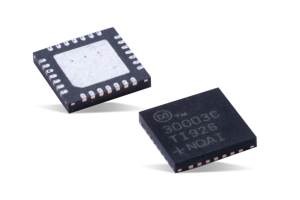
MAX30003 Biopotenciál AFE Průvodce: Analýza obvodu, konfigurace pin, datový list a AD8232 Srovnání
na 2024/11/7

Porozumění tranzistoru KSC1845
na 2024/11/7
Populární příspěvky
-

Co je GND v obvodu?
na 1970/01/1 3339
-

Průvodce konektorem RJ-45: barevné kódy konektoru RJ-45, schémata zapojení, aplikace R-J45, datové listy RJ-45
na 1970/01/1 2874
-
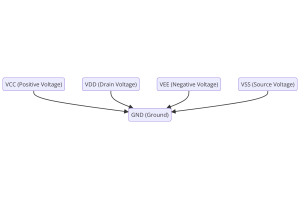
Porozumění napětí napájení v elektronice VCC, VDD, VEE, VSS a GND
na 0400/11/22 2839
-

Typy konektoru vláken: SC vs LC a LC vs MTP
na 1970/01/1 2296
-

Porovnání mezi DB9 a RS232
na 1970/01/1 1911
-
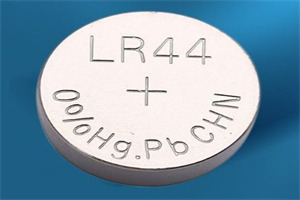
Co je to baterie LR44?
Elektřina, ta všudypřítomná síla, tiše prostupuje každý aspekt našeho každodenního života, od triviálních gadgetů po život ohrožující lékařské vybavení, hraje tichou roli.Skutečně uchopit tuto energii, zejména to, jak ji ukládat a efektivně ji vydávat, není snadný úkol.Na tomto pozadí se tento článek zaměří na typ baterie mincí, která se může zdát na pov...na 1970/01/1 1871
-

Co je RF a proč ho používáme?
Technologie rádiové frekvence (RF) je klíčovou součástí moderní bezdrátové komunikace, což umožňuje přenos dat na velké vzdálenosti bez fyzických připojení.Tento článek se ponoří do základů RF a vysvětluje, jak elektromagnetické záření (EMR) umožňuje RF komunikaci.Prozkoumáme principy EMR, vytvoření a kontrolu signálů RF a jejich rozsáhlé použití.Článek s...na 1970/01/1 1854
-

Komplexní průvodce HFE v tranzistorech
Tranzistory jsou klíčovými součástmi v moderních elektronických zařízeních, což umožňuje zesílení a kontrolu signálu.Tento článek se ponoří do znalostí obklopujících HFE, včetně toho, jak vybrat hodnotu HFE tranzistoru, jak najít HFE a zisk různých typů tranzistorů.Prostřednictvím našeho průzkumu HFE získáváme hlubší pochopení toho, jak tranzistoři fungují...na 5600/11/22 1852
-

Porozumění základy: odolnost proti indukčnosti a kapacitance
Ve složitém tanci elektrotechniky se trojice základních prvků zabírá v centru pozornosti: indukčnost, odpor a kapacita.Každý nese jedinečné rysy, které diktují dynamické rytmy elektronických obvodů.Zde se vydáme na cestu, abychom dešifrovali složitost těchto komponent, abychom odhalili jejich odlišné role a praktické použití v obrovském elektrickém orchestru.Indukčnost...na 1970/01/1 1849
-

CR2430 Baterie Komplexní příručka: Specifikace, aplikace a srovnání s bateriemi CR2032
Co je baterie CR2430?Výhody baterií CR2430NormaAplikace baterie CR2430CR2430 EkvivalentCR2430 vs CR2032Velikost baterie CR2430Co hledat při nákupu CR2430 a ekvivalentůDatový list PDFČasto kladené otázky Baterie jsou srdcem malých elektronických zařízení.Mezi mnoha dostupnými typy hrají mincovské buňky klíčovou roli, běžně se vyskytují v kalkulačkách, dálkovém ovladači ...na 1970/01/1 1842

